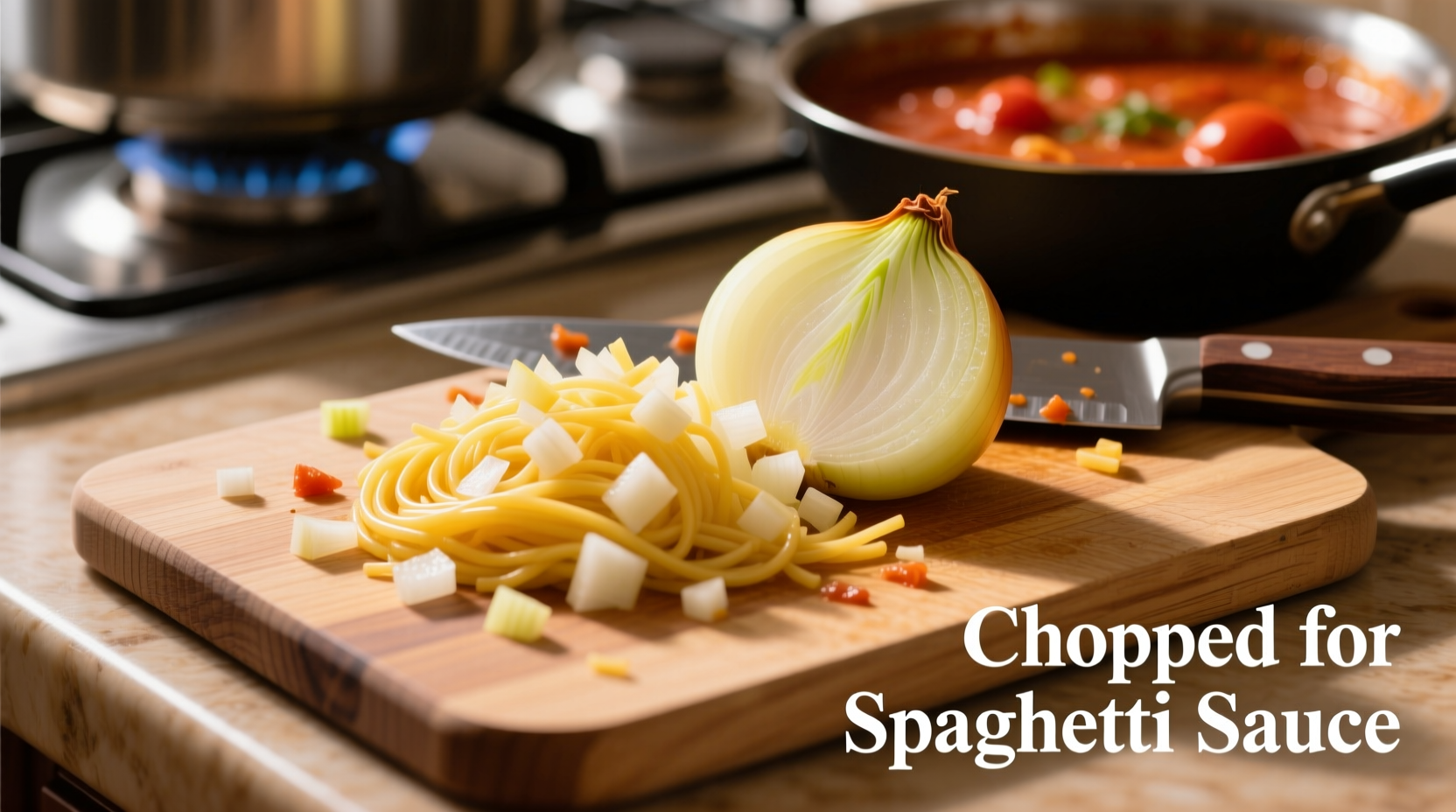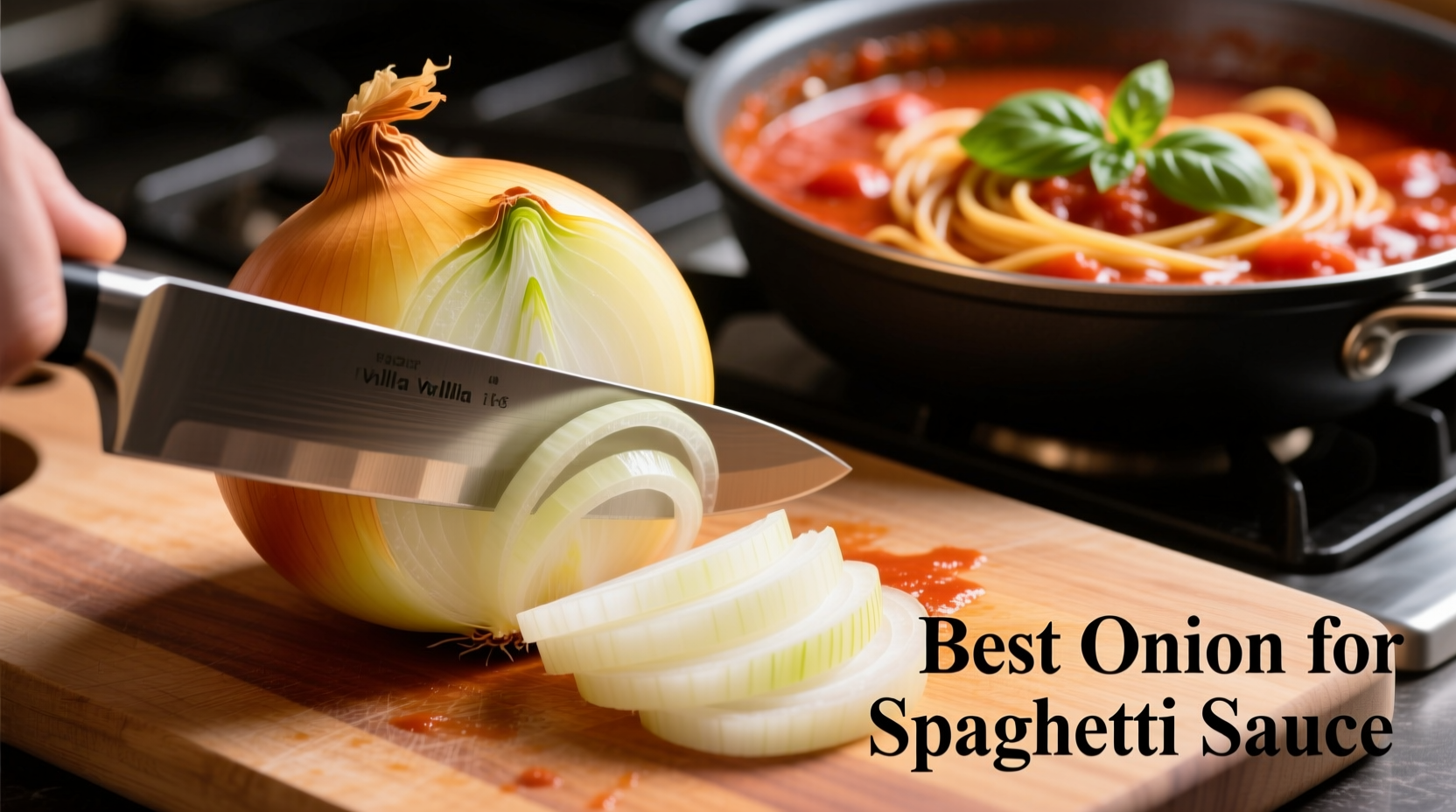When crafting the perfect spaghetti sauce, the onion you choose isn't just an ingredient—it's the flavor foundation that can make or break your entire dish. After decades of testing countless onion varieties in professional kitchens and home stoves alike, I've discovered that yellow onions consistently deliver the complex flavor profile that transforms ordinary tomato sauce into something extraordinary.
Why Onion Selection Matters in Italian Cooking
Onions form the soffritto—the aromatic base—of authentic Italian cooking. This isn't just culinary tradition; it's food science. When onions cook slowly in olive oil, their natural sugars caramelize while sulfur compounds mellow, creating hundreds of new flavor compounds that form the backbone of your sauce's taste profile. The wrong onion can introduce unpleasant bitterness or fail to develop the necessary depth.
| Onion Type | Sweetness Level | Pungency | Best For Spaghetti Sauce? | Why/Why Not |
|---|---|---|---|---|
| Yellow Onion | Moderate | Moderate-High | ✓ Best Choice | Perfect balance that mellows beautifully during cooking |
| White Onion | Low | High | ✗ Not Recommended | Too sharp, can dominate sauce with harsh flavors |
| Red Onion | Moderate | Moderate | △ Limited Use | Color bleeds, flavor too sweet for traditional sauces |
| Sweet Onion (Vidalia, Walla Walla) | High | Low | △ Special Cases | Lacks complexity, can make sauce one-dimensionally sweet |
| Shallot | Moderate-High | Low-Moderate | △ For Finishing | Delicate flavor better suited for finishing than base |
The Science Behind Yellow Onions' Superior Performance
Yellow onions contain the ideal ratio of fructose to sulfur compounds for tomato-based sauces. According to research from the University of California's Agriculture and Natural Resources department, yellow onions have approximately 4-5% sugar content compared to 6-8% in sweet onions and 3-4% in white onions. This moderate sweetness develops complex caramelized notes without overwhelming the tomatoes' natural acidity.
When cooking spaghetti sauce, yellow onions undergo a remarkable transformation:
- 0-5 minutes: Raw pungency releases as volatile compounds evaporate
- 5-15 minutes: Natural sugars begin caramelizing, creating 30+ new flavor compounds
- 15-30 minutes: Sulfur compounds mellow while umami-enhancing compounds develop
- 30+ minutes: Full integration with tomatoes creates the signature "fond" that forms sauce depth

Professional Techniques for Perfect Onion Integration
Knowing which onion to use is only half the battle. How you prepare and cook them determines whether your spaghetti sauce sings or falls flat:
The Proper Dice Size Matters More Than You Think
For traditional spaghetti sauce, aim for a medium dice (about 1/4 inch). This provides maximum surface area for flavor development while ensuring the onions fully dissolve into the sauce during extended cooking. Too fine, and they burn; too large, and they remain distinct chunks that disrupt the sauce's texture.
The Golden Rule of Onion Cooking
"Cook your onions until they're just translucent, then wait five minutes longer." This professional chef technique ensures the harsh sulfur compounds have fully dissipated before adding tomatoes. Rushing this step leaves unpleasant sharpness in your finished sauce.
Oil Temperature Secrets
Start with medium-low heat (around 275°F/135°C). Higher temperatures cause the exterior to burn before the interior cooks through. The ideal visual cue: onions should sizzle gently but not aggressively pop in the oil.
When to Break Tradition: Special Sauce Variations
While yellow onions reign supreme for classic tomato-based spaghetti sauce, certain variations benefit from alternative choices:
- Cream-based sauces: Shallots provide delicate sweetness without overpowering
- Quick weeknight sauces (under 30 minutes): Sweet onions work better as they don't require long cooking to mellow
- Meat-heavy ragù: White onions add necessary sharpness to cut through rich meats
These exceptions prove the rule—understanding why yellow onions work best allows you to make informed substitutions when appropriate, rather than guessing.
Three Common Onion Mistakes That Ruin Spaghetti Sauce
- Skipping the sweat stage: Adding tomatoes too soon traps harsh onion flavors
- Using pre-chopped onions: Oxidation begins immediately after cutting, degrading flavor compounds
- Overcrowding the pan: Causes steaming instead of proper caramelization
Fix these three mistakes, and you'll notice an immediate improvement in your sauce's depth and complexity—even with the same basic recipe.
Seasonal Considerations for Onion Selection
Onion quality varies throughout the year. According to the USDA's National Agricultural Statistics Service, peak yellow onion season runs from August through April, with the sweetest, most flavorful bulbs available September-January. During summer months (May-July), onions draw energy toward sprouting, resulting in less dense bulbs with higher water content that don't caramelize as effectively.
When selecting yellow onions, look for firm bulbs with dry, papery skins and no green sprouts. The heavier the onion for its size, the higher the solid content and lower the water content—critical for concentrated flavor in sauce.











 浙公网安备
33010002000092号
浙公网安备
33010002000092号 浙B2-20120091-4
浙B2-20120091-4